This post has been sitting in my drafts folder since October, so I figured it was high time to post it as we near the end of 2015. It has been 9 months since I last blogged, which is the longest I have ever gone without blogging in the decade that I have been blogging. I persevere despite all that is going on. As Marlene Scardamalia says, “Never give up!”
During this time I have been preoccupied with work in the Office of Open Learning at University of Windsor, specifically those projects funded by MTCU’s Online Shared Course Development Fund for 2014-15. I previously blogged about my involvement in grant writing and educational development for these projects. Previously, I have taken leadership roles on big funded projects, but my roles tended to be more in a research or managerial capacities. In contrast, on these projects, I have also been doing a lot more hands-on instructional design (ID) and development on the 4 (of the 10 funded) online courses and modules in collaboration with my team, which is quite possibly the smallest ID team at any Ontario university, but we were able to secure the second most amount of funding provincially. I learned a lot in the process, including coordinating studio video production–on site and on location, interview-style, green screen, lecture, etc. I will try to blog more about those developments in the Office of Open Learning Blog in the coming weeks as we await to hear results of the next round of funding for 2015-16.
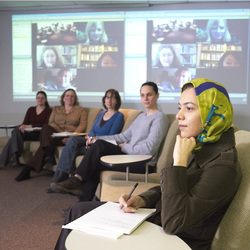
Concomitantly, I have come to embrace my identity as an academic developer or educational developer. The shift happened over the summer, as I closely collaborated on the online course and module design and development with our faculty leads and team. A little background. Throughout my graduate studies in Curriculum Studies and Teacher Development at the University of Toronto, I was trained to become a traditional educational researcher in the learning sciences. Back then, I would never have imagined that I would become an educational developer. Moreover, I would have scoffed at such a suggestion! I was an active member in research groups conducting cutting-edge interdisciplinary educational technology and online learning research at the intersection of education, computer science, psychology, engineering, anthropology, and linguistics. We regularly traveled internationally to present findings of our research at top-tier conferences and collaborated on publications with illustrious colleagues. At the same time, we constantly experimented with new technologies, like video conferencing for online and blended teaching and learning (photo to left circa 2004; see me as a distance education student on the screen, middle right). Later, I was a postdoc on a large-scale European Commission funded F7 ICT research project called Next Generation Teaching, Education and Learning for Life (NEXT-TELL), then an Assistant Professor in Education. Up until fairly recently, I identified as a research faculty member, not as an educational development faculty member. However, collaborating on the online course and module development, attending the EDC Institute 2015 and presenting findings from scholarship of teaching and learning (SOTL) research at the STLHE 2015 and Windsor-Oakland Teaching Conference 2015 helped me transition into my new professional identity as an educational developer. I now realize that although I am new to this role, I have an ideal background for it and am rather good at it, for a novice.
I am a newbie on multiple fronts. On a non-academic and adult-amateur sport front, I have been working on becoming an Eventer. I first blogged about my foray into the sport of Eventing back in February. In that blog post, I contrasted the ease with which I can attain flow or complete focus in my professional, academic work, and the difficulty I face in learning a new sport, even if I did learn to ride as a child. Of all the equestrian pursuits I could have chosen,
“Eventing could easily considered one of the most difficult, requiring fortitude and pluck for when the riding gets rough, mixed with a sense of humor for the unexpected”
— Jennifer McFall, A Study in Perseverance
My equine partner, Flyin Solo, and I began the season in May with the local Canada South Combined Training Series shows co-hosted by Cidermill Farms and Nova Equestrian Centre, then proceeded to complete my first SOCTA horse trial at Highland Green at the end of May. Psychologically, the unseasonably cold, driving rain (read: horizontal sheets of rain) for a first show far from home with all three eventing phases (dressage, stadium jumping, and cross-country) was…difficult.
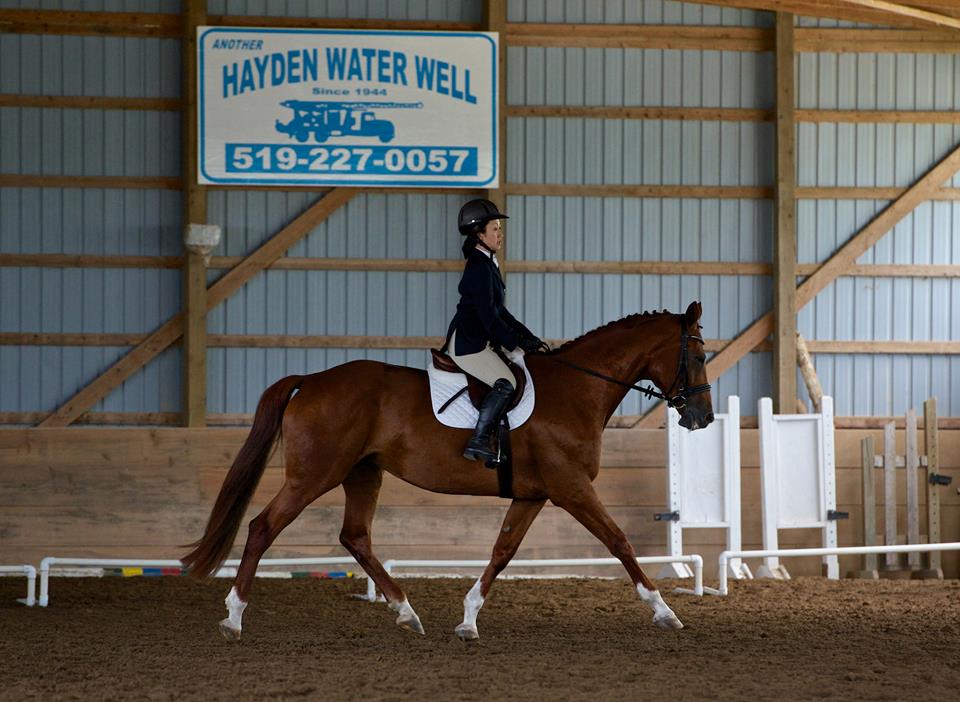
At that point, I had not even ridden Solo up and down hills, or warmed up in a congested ring with myriad horses and riders chaotically going in different directions. We train in flat land Windsor-Essex County, and I tend to ride alone in a ring. So, I found it all a bit daunting! After completing the dressage test (not our best as Solo picked up on my tension) and a fast stadium round (messed up the distance to the last jump), I had to ride down a BIG, steep, muddy hill to enter the start box. To be honest, riding down that hill was more scary for me than the actual XC course. We galloped across the XC course jumping inviting, but solid, fences. We had some time faults (better safe than sorry) but what a hoot! Solo and I had such a blast going cross-country. She is so good XC; I trust her judgment entirely. I was hooked! Later, in August, we returned to Highland Green to improve our scores and placed 4th in a big field of competitors. Solo, being an over-achiever, also earned herself the Canada South Combined Training Series Championships in both Senior Pre-Entry (with me ) and Senior Beginner (with Chris) divisions.
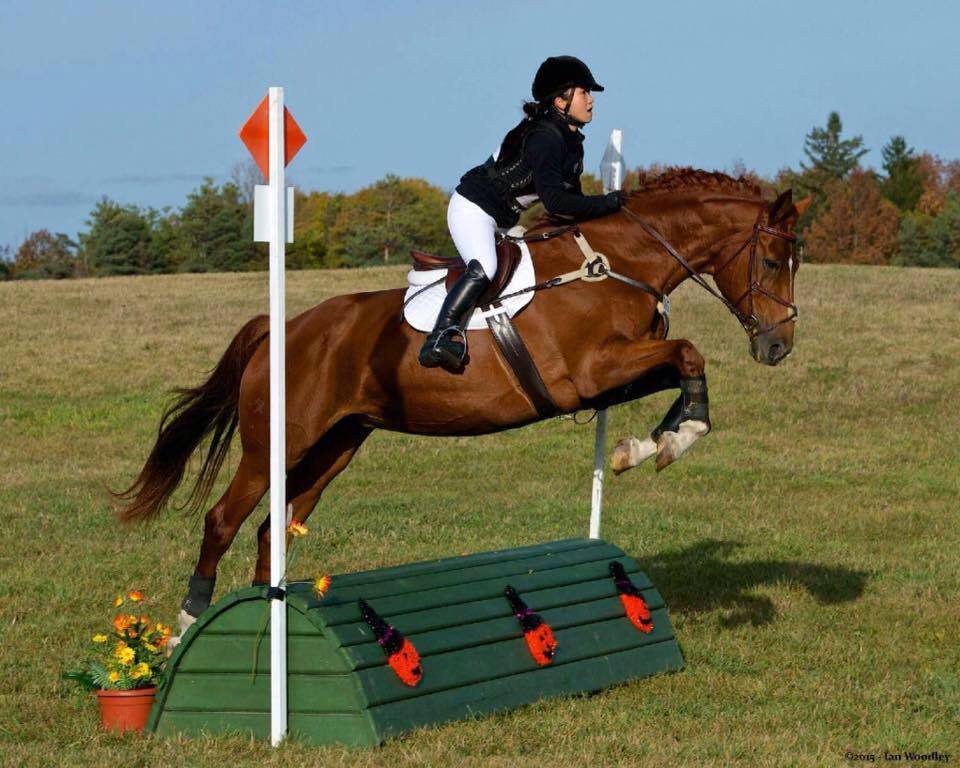
In October, Solo and I competed at our first provincially-sanctioned OHTA event at Will O’Wind Farms in Mono Hills, the official host of the cross-country phase of Eventing in the Toronto Pan Am Games 2015. Solo actually started her eventing career at Will O’ Wind (my horse is more accomplished than me having successfully competed at the Pre-Training level, which is 2 levels above Pre-Entry level; we’ll try Entry level next season), so it was great for her trainers to see that she was taking care of someone new. We did very well for our first big event and came in 10th. XC is our favourite phase of eventing, even if we were both tuckered out by that phase at 5pm at the end of a very long day!
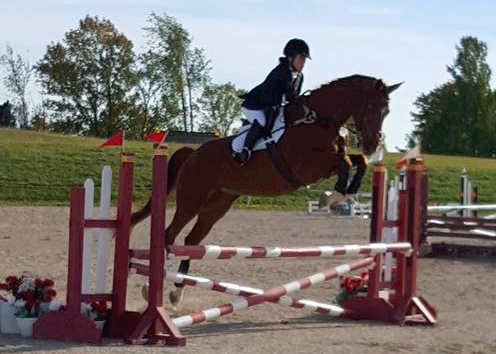
During the stadium jumping phase of that event, Solo and I were jumping fences higher than I had ever jumped before. My coach, Jessica, tried to not scare me by telling me that the fences were at least 2’6″, if not taller. Solo, true to her show name “Flyin Solo,” is a very scopey jumper who clears fences with room to spare (her knees are above the top of the standards in the photo to the left), so I felt like we were just flying over those fences. I almost had an “involuntary dismount” from landing this big jump, but I managed to stay on. It was a bit of an athletic feat for me. I had never really considered myself an athlete before. I identify as an academic and a mother, and an amateur rider who is lucky to get in two good rides a week. Unlike those fearless teenage girls at the barn, I am scared to jump big fences. Before Solo, I never had a horse who could jump this big or move so fast! A big thank you to my eventing coach, Jessica Buterbaugh, at Nova Equestrian Centre for helping me overcome my fears and doing justice to my talented horse. Additional thanks to Rosemary O’Connell for her kind words of encouragement! Both of your support means a lot to me. I feel a great sense of accomplishment, having progressed from popping cross rails last December to now schooling 2’9” or 3′ fences and being able to jump 2’6″ hunter courses off-site even if Solo gets worked up into a lather (Solo says, “Woo-hoo, Mom, this is FUN!!!”).
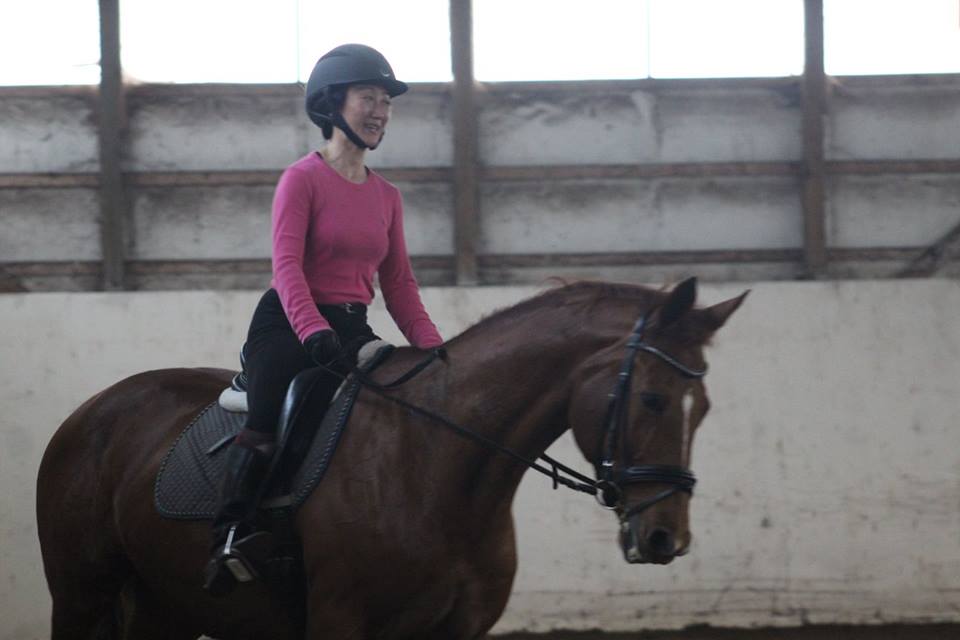
Over the winter, I will persevere and work on improving my skills both over fences and in dressage to become a better eventer. Jacklyn Brooks, FEI Dressage Trainer and Coach, is my coach in helping me becoming a better dressage rider, because dressage is incredibly important in connecting with your equine partner and being an effective rider. Jackie has a background in psychology, physiology and communication, and is really instrumental in helping me…
See difficult situations, not as barriers, but to see them as positive challenges that motivate me to a better problem solver
(note my big smile in the photo; who knew dressage could be so much fun!). Of course, these lessons from my riding transfer to other arenas of my life, including my professional and family lives. Dream big! Work hard! Have fun!

Leave a Reply